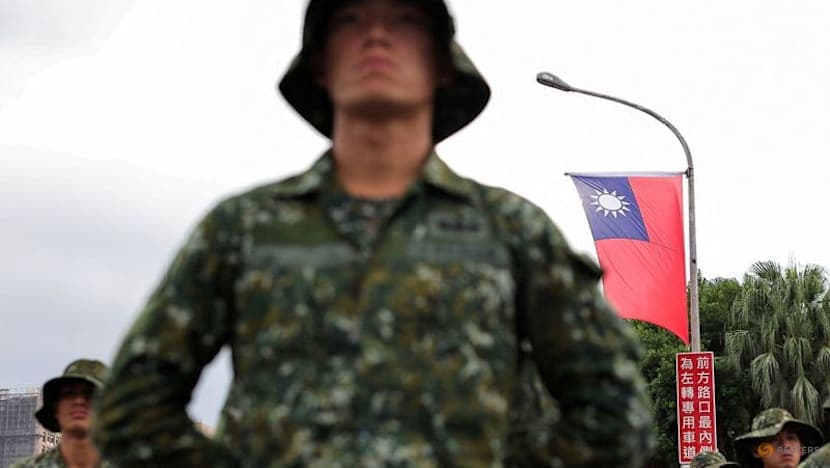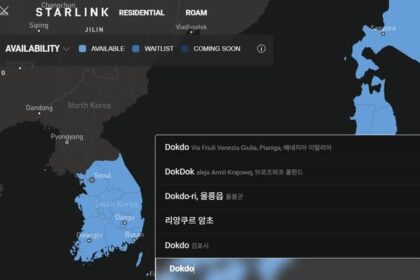Why China is marking an 80 year milestone now
China plans to commemorate the 80th anniversary of Taiwan retrocession, the term used for the island’s 1945 handover by Japan to Chinese administration, at a ceremony in Beijing’s Great Hall of the People. The event highlights a sensitive chapter in East Asia’s modern history and a continuing dispute over historical memory and political identity across the Taiwan Strait. Invitations have been extended to people in Taiwan, yet Beijing has not publicly announced which top leaders will attend or the final agenda.
- Why China is marking an 80 year milestone now
- What retrocession means and how it began in 1945
- Dueling narratives across the strait
- The legal debate that lingers from World War Two
- Politics and united front tactics in 2025
- Who is invited, who will attend
- Pride weekend in Taipei offers a contrasting scene
- Regional stakes and global watch
- Key Points
For Beijing, the anniversary is woven into a broader series of 80 year commemorations tied to World War Two. Chinese officials cast retrocession as part of a collective Chinese victory, one that includes people in Taiwan, and a result of the postwar settlement. Taiwan’s government has pushed back, banning public officials from attending events in China tied to retrocession. It argues that the 1945 handover was to the Republic of China, not to the People’s Republic of China, which was founded in 1949 after the civil war on the mainland.
When and where is the ceremony
Diplomatic sources have indicated the ceremony is slated for Saturday morning (Oct 25) in the Great Hall of the People, although Beijing has not disclosed the full speaker list. The last comparable commemoration in 2015 featured a speech by Yu Zhengsheng, then the fourth ranked Chinese leader, and included foreign representatives. This year’s event arrives amid rising cross strait tension and a heated contest over wartime narratives.
What retrocession means and how it began in 1945
Taiwan’s status shifted dramatically in the late nineteenth and mid twentieth centuries. After losing the First Sino Japanese War, Qing China ceded Taiwan to Japan under the 1895 Treaty of Shimonoseki. Japan ruled the island for 50 years, investing in infrastructure and administration while enforcing colonial controls. The tide turned with World War Two. Allied leaders issued the Cairo Declaration in 1943 and reaffirmed its terms in the 1945 Potsdam Declaration, stating Japan should return territories taken from China, including Taiwan, after its surrender.
Following Japan’s defeat, General Douglas MacArthur’s General Order No. 1 directed Japanese forces in Taiwan to surrender to representatives of the Republic of China. On Oct 25, 1945, Japanese Governor General Rikichi Ando handed over authority in Taipei to Chen Yi, the Republic of China’s envoy. The ROC organized Taiwan as a province and declared the date Retrocession Day. At the time, the United States and the United Kingdom treated the situation as a transfer of administrative control pending a formal peace treaty, which left room for later legal debate over sovereignty. For the people on the island, the new era quickly brought political, social, and economic adjustments under ROC governance.
Dueling narratives across the strait
Beijing’s Taiwan Affairs Office presents retrocession as a success shared by all Chinese people and a confirmation of Taiwan’s place within a greater Chinese nation. Chinese officials say the wartime outcome, and what followed, underpin their claim that Taiwan is part of China as a matter of history and law.
Zhu Fenglian, spokesperson for the Taiwan Affairs Office, framed the anniversary as a unifying moment and a wartime achievement that should be marked on both sides of the strait. She said the ceremony will invite participants from Taiwan.
Zhu Fenglian said the retrocession was a significant achievement of victory in the War of Resistance and that it deserves to be commemorated by people on both sides of the Taiwan Strait.
Taiwan’s government rejects the framing that connects the island to the People’s Republic of China via retrocession. It stresses that the Republic of China, the government in Taipei today, fought Imperial Japan alongside the Allies and accepted Japan’s surrender in 1945. In recent days, Taipei prohibited officials, students, and teachers from attending Chinese events tied to retrocession.
Chiu Chui cheng, who heads Taiwan’s Mainland Affairs Council, accused Beijing of political manipulation and warned that participation risks lending support to a narrative that erases the Republic of China.
Chiu Chui-cheng said Beijing has repeatedly fabricated false narratives and that in events related to retrocession it has sought to concoct the claim that Taiwan is part of the People’s Republic of China. He added that the ultimate goal is to eliminate the Republic of China and annex Taiwan.
The two positions speak to deeper disagreements over history and statehood. Beijing calls itself the successor to the Republic of China and insists that the island’s fate was settled in 1945. Taipei responds that the ROC continues to exist, that it never ceded its sovereignty, and that the People’s Republic of China did not exist at the time of the handover.
The legal debate that lingers from World War Two
Although Oct 25, 1945 is widely remembered as the day Japanese authorities on Taiwan surrendered to the ROC, lawyers and historians continue to argue over whether the handover itself restored sovereignty or whether only administrative control changed until a treaty concluded. The San Francisco Peace Treaty signed in 1951 saw Japan renounce sovereignty over Taiwan but did not name a recipient state. This omission has fueled long running disputes over the island’s final legal status in the immediate postwar years.
The Republic of China and Japan signed the Treaty of Taipei in 1952, which reaffirmed Japan’s renunciation of Taiwan and recognized wartime declarations that Taiwan would return to China. Taipei regards that agreement as confirming the earlier transfer. Beijing, however, rejects the San Francisco treaty as invalid because it was not a party and cites its status as the internationally recognized government of China after 1949 to claim succession to Chinese sovereignty over Taiwan.
Another key node in the debate is United Nations General Assembly Resolution 2758 (1971), which transferred China’s seat at the UN from the ROC to the PRC. Beijing maintains that the resolution affirms its representation of China and, by extension, Taiwan’s place within China. Taiwan and many legal scholars counter that Resolution 2758 addressed only the question of who holds China’s UN seat, not Taiwan’s sovereignty. These legal crosscurrents help explain why retrocession anniversaries draw intense scrutiny, since they touch on unresolved questions from the end of World War Two.
Politics and united front tactics in 2025
Taiwanese officials say Beijing is using a trio of 80 year anniversaries in 2025, the end of the Chinese People’s War of Resistance Against Japanese Aggression, the founding of the UN, and Taiwan retrocession, to promote its narrative at home and abroad. The goal, they argue, is to frame the postwar order as confirming that Taiwan belongs to China and to invite prominent Taiwanese figures to endorse that message. Chinese officials have previewed large scale commemorations this year, including a major September military parade to mark the Allied victory in World War Two.
Taiwan’s Mainland Affairs Council has also cataloged increased pressure on the island this year. The list includes encirclement drills by the People’s Liberation Army, new legal strategies and rhetoric targeting supporters of Taiwan independence, arrest warrants against serving or former Taiwanese military personnel, a change to civilian flight routes closer to the strait median line, and export restrictions aimed at groups Beijing labels as independence entities. Taipei has responded with measures it says are designed to protect national security and to push back against what it sees as political and information operations directed at the island.
Who is invited, who will attend
Invitations have gone out to individuals in Taiwan, according to diplomatic sources familiar with the planning. The ceremony is expected to take place in the Great Hall of the People, with the timing aligned with Retrocession Day on Oct 25. Beijing has not confirmed which senior leaders will speak. A decade ago, the event featured a speech by a top Chinese political figure and drew foreign attendees, a sign that Beijing sees the anniversary as an occasion for both domestic ceremony and international messaging.
Taipei’s ban on attendance covers central and local officials as well as students and teachers, and it urged the wider public to refrain from participation. Taiwanese authorities say attendance would lend legitimacy to a narrative they reject. Beijing has accused Taiwan’s government of intimidating Taiwanese people from attending and of distorting history. The disagreement underscores a deeper freeze in formal contacts and growing mistrust across the strait.
Pride weekend in Taipei offers a contrasting scene
On the same weekend as the planned ceremony in Beijing, Taipei will host East Asia’s largest Pride march, a celebration of equality and diversity that has drawn participants from across the region. Taiwan legalized same sex marriage in 2019 and has become a focal point for LGBTQ rights in Asia. The coincidence highlights the different political and social atmospheres on the two sides of the strait, as Taipei’s civil society focuses on inclusion and public expression while Beijing’s commemoration centers on wartime history and state narratives.
While the events are unrelated, their timing reinforces parallel stories about identity and values. Taiwanese officials view the Pride celebration as a marker of democratic development. For Beijing, commemorations around wartime anniversaries are vehicles to reinforce national unity and to present China as a central architect of the postwar order.
Regional stakes and global watch
Major powers will watch the Beijing ceremony and Taiwan’s reaction closely because the dispute touches on security in the Western Pacific. The United States maintains unofficial ties with Taiwan and provides defensive support under the Taiwan Relations Act. It does not recognize Taiwan as a state, yet has warned against any use of force to change the status quo. China has intensified military activity around Taiwan in recent years and staged a large parade last month to mark the Allied victory in World War Two.
The retrocession commemoration is symbolic, yet symbols matter in cross strait politics. Beijing sees the ceremony as affirmation of a historical settlement. Taipei views it as an attempt to recast that settlement to fit the political needs of a different state that was founded after the war. The ceremony will not resolve these disagreements, but it will spotlight them at a moment when the military, legal, and diplomatic dimensions of the Taiwan question are all in sharper focus.
Key Points
- China plans a ceremony in Beijing’s Great Hall of the People to mark 80 years since Taiwan retrocession, with invitations sent to people in Taiwan and leadership attendance not yet disclosed.
- Taiwan has banned officials, students, and teachers from attending Chinese retrocession events, accusing Beijing of distorting wartime history.
- Beijing frames retrocession as a shared Chinese victory that confirms Taiwan’s place in China, while Taipei says the 1945 handover was to the Republic of China, not the People’s Republic of China.
- The San Francisco Peace Treaty (1951) saw Japan renounce sovereignty over Taiwan without naming a recipient, and the Treaty of Taipei (1952) reaffirmed Japan’s renunciation, leaving room for differing legal interpretations.
- UN Resolution 2758 (1971) transferred China’s UN seat from the ROC to the PRC, but did not adjudicate Taiwan’s sovereignty.
- Chinese commemorations this year, including a large World War Two victory parade, are part of broader messaging that Taiwan officials call political pressure.
- Diplomatic sources say the event is expected on Oct 25, echoing the last major commemoration in 2015 that featured a top Chinese leader’s speech.
- On the same weekend, Taipei is hosting East Asia’s largest Pride march, highlighting contrasting priorities on the two sides of the strait.












